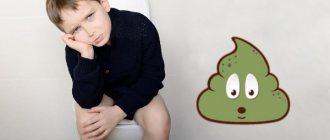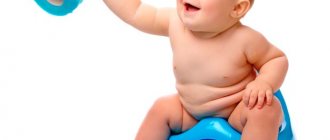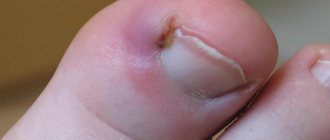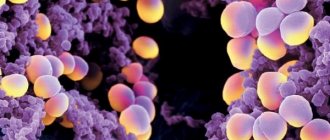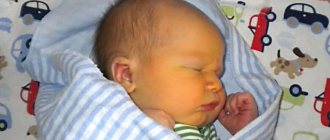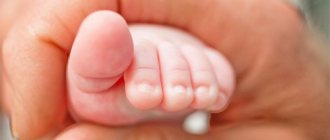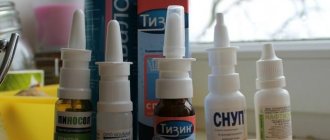Causes of green diarrhea in children
Green stools can appear suddenly, and do not always indicate pathologies in the child’s body. There are many causes of diarrhea in children. For example, improper nutrition of a nursing mother, nutritional gaps in a one-year-old child and older children. Some can cause complications and pose a real threat to the health and life of the baby.
Causes of green diarrhea in a child:
- Kidney disease.
- Intestinal infection.
- Food poisoning.
- Intestinal dysbiosis.
- Dietary errors.
- Intestinal bleeding.
- Allergic reaction to products.
In a one-month-old baby, the reason may be the passage of meconium. If the child is calm and not crying, panic is inappropriate. This type of stool passes quickly. If green diarrhea is observed in an older infant, there is a high probability of an intestinal infection. Acute diarrhea is accompanied by nausea, frequent regurgitation, vomiting, and elevated body temperature.
If you suspect a disease, you should immediately call a doctor or an ambulance. Before the pediatrician's visit, the child from 6 months is allowed to drink non-carbonated mineral water.
If a nursing mother consumes foods that can cause allergies, the baby's reaction may be unnaturally colored diarrhea. Mom's milk is not fat enough - the stool is greenish in color. Maternal food poisoning affects the consistency and color of the baby's stool. A one-month-old baby's intestines are vulnerable. Mom needs to adhere to proper nutrition.
At approximately 4 months, when teething, liquid stools of a yellow or green color may appear. The baby scratches swollen, itchy gums with unclean fists or toys, bacteria get inside, change the color and consistency of the contents of the diaper.
In children aged 2-3 years, the cause of loose stool is overeating plant foods or foods high in sugar.
Diarrhea in a formula-fed newborn may be caused by the introduction of a new formula.
Introduction of complementary foods
Liquid green stool during breastfeeding is often found if the mother begins to introduce complementary foods. Especially if the new products include cow's milk, fruits and vegetables. If the little one’s general condition does not cause concern - he is cheerful, not capricious and eats well, there is no need to panic. It is enough to inform the pediatrician about the disorder at your next appointment. Perhaps the doctor will recommend getting tested for dysbiosis and prescribing probiotics. The stool returns to normal within two days.
Dysbacteriosis
A common occurrence in children, it is characterized by a disturbance in the composition of the intestinal microflora. The number of pathogenic microorganisms increases, beneficial bacteria die. The disease is more common in preschool children, sometimes in infants. Dysbacteriosis in infants can develop due to a sudden transition from breastfeeding. In older children, due to an unbalanced or monotonous diet, in addition to taking antibiotics. Disruption of microflora is provoked by colds and unfavorable environmental conditions. Diarrhea in case of illness is green in color with mucus.
It is possible to protect your baby from dysbacteriosis by treating the breast before feeding, sterilizing dishes and toys. It is necessary to carry out regular wet cleaning in places where the child is most often located.
Viral and bacterial infections
Infection of a baby with an illness can occur through unprocessed foods, products with an expired shelf life when communicating with an infected person.
The baby is worried about severe abdominal pain, vomiting, green stools with a pungent odor, and mucus. Continuous vomiting and diarrhea cause dehydration. The baby turns pale, his limbs become cold. If you have symptoms, calling an ambulance is mandatory.
For children in the first months of life, dehydration is fraught with irreversible consequences. It is difficult to replenish the water balance; babies do not drink water well.
Video “How to treat diarrhea in a child”
Some tips for treating diarrhea in children
The appearance of green diarrhea is not always a cause for concern. It is usually difficult for parents to independently determine the cause of diarrhea in their child.
.
But, despite this, many of them for some reason stubbornly begin to treat with drugs from the medicine cabinet, without thinking about the possible consequences of such amateur activity
. But green diarrhea in a child is not ordinary diarrhea, but a serious symptom that requires close medical attention.
Symptoms of diarrhea in children
The main task facing parents and the doctor at the first stage is to find out the cause of the unpleasant symptom in order to avoid complications. Undesirable coloration of stool may be accompanied by other manifestations.
A high temperature in addition to greenish stools sometimes indicates dysentery or salmonellosis. Salmonellosis is characterized by dark green stool with flakes and severe vomiting.
Frequent loose green stools with foam without fever are a sign of dysbacteriosis. Mucus and blood in stool due to dysentery.
The parent should be aware of associated symptoms. Often observed:
- Whims, crying without tears, anxiety.
- Sleep disturbance.
- Refusal to eat.
- Urine is dark in color.
- Abdominal pain.
The worst thing with diarrhea is dehydration. Every parent should know the signs of dehydration in order to take timely measures to avoid severe consequences. Dehydration in children manifests itself as:
- Dry lips and tongue, skin, circles under the eyes.
- Rapid pulse, overheating.
- Lack of urine, urine in small quantities with an unpleasant odor.
- Body weight decreases.
- Retraction of the fontanel in an infant.
The appearance of signs should be a good reason to call an ambulance. The child's condition with severe dehydration is stabilized in the hospital.
Complications
If parents did not take care of their child’s green stool in a timely manner, and its cause was one of the serious diseases, this may result in complications, including:
- convulsions at high temperatures;
- dehydration of the body;
- dysbacteriosis can lead to dermatitis, bronchial asthma, chronic gastroduodenitis, intestinal dyskinesia, proctosigmoiditis;
- intestinal infections if left untreated can result in neurotoxicosis, cerebral edema, electrolyte disturbances, infectious-toxic shock, sepsis, hemolytic-uremic syndrome, toxic-dystrophic state;
- consequences of dysentery - intestinal bleeding, pericolitis, rectal prolapse, arthritis, neuritis, encephalitis, dysbacteriosis, malnutrition, hypovitaminosis, anemia, pneumonia, pyoderma, otitis media.
In order not to encounter these dangerous consequences, it is necessary to consult a doctor in a timely manner, and even better, to prevent this phenomenon. Prevention is always much more pleasant and easier than treatment.
Parents' actions
The anxiety that arises due to the baby’s condition sometimes interferes with making the right decisions. Adults do not know what to do in a situation if it arises for the first time.
First of all, parents should call a doctor. Before the doctor arrives, it is possible to alleviate the child’s condition. Clean still water should be offered. It is better not to allow children who are one year old to eat temporarily. For breastfed infants, feedings are recommended to replenish lost fluids, but meal times should be reduced.
It is not recommended to give your baby medications without consulting a doctor. You can give Smecta if qualified help does not arrive soon. To bring down the temperature, if it exceeds 38.5 degrees, give ibuprofen. For intestinal infections, the use of antibiotics is mandatory, but you should not give medications to your baby yourself.
Prohibited techniques: a reminder for parents
If the condition begins to rapidly deteriorate, and in addition to frequent episodes of diarrhea, other alarming symptoms are observed, it is simply unacceptable to continue to self-medicate.
The most common mistakes parents make:
- painkillers - they are not only ineffective for intestinal spasms, but will also hinder the correct diagnosis in the future;
- tetracycline antibiotics are highly toxic drugs that are used only to treat adults;
- antidiarrheals - active substances prevent the elimination of toxins in the body, therefore they are used only in the treatment of children in adolescence and only under the supervision of a doctor;
- food - in the acute stage, new portions of food can increase diarrhea and provoke vomiting;
- restriction in fluid – fraught with dehydration;
- ice or a heating pad in the abdominal area - without a diagnosis, these methods will be fraught with serious complications.
So, before you refuse medical help and start experimenting, you should think about what price you are willing to pay for your decision.
Diagnosis and treatment
The doctor will determine the cause of diarrhea after talking with the parents and examining the baby. It may be necessary to undergo additional examination to clarify the diagnosis.
Diagnostics
It is difficult to determine the true cause of diarrhea based on the color and consistency of stool alone. Sometimes the doctor prescribes tests:
- Bacterial analysis of stool is an informative research technique that identifies pathogenic microorganisms.
- General blood analysis.
- Blood test for intestinal infections.
- General urine analysis.
- Stool analysis.
Preventive measures
Preventing a disease is easier than treating it. Parents need to know the rules that will help avoid gastrointestinal disorders, as a result of green diarrhea.
- A nursing mother needs to adhere to proper nutrition. Avoid eating allergenic foods. Do not eat fatty, spicy foods. Do not take medications without consulting your doctor.
- A newborn baby on artificial feeding suffers from diarrhea if the formula is not suitable. After consulting with your pediatrician, you can choose the appropriate diet.
- Greenish diarrhea may indicate intolerance to the product. Therefore, complementary foods should be introduced gradually and carefully in small portions in a puree state.
- Parents should not lick baby pacifiers or spoons. Thus, the infection spreads from an adult to a baby.
- The diet of preschoolers should be balanced.
- Older children need to be taught personal hygiene rules. Make sure that your hands are clean and that foreign objects do not get into your mouth.
Every responsible parent worries about the health of the baby. And such a phenomenon as green diarrhea worries caring parents. The main thing is not to panic, but to find out the cause of the symptom by notifying the pediatrician about what is happening. The doctor will definitely help to identify the disease that caused the symptom and prescribe treatment for the child in accordance with the age and characteristics of the body.
Source
Green diarrhea in a baby can frighten an inexperienced mother, but an experienced mother already knows that the cause of such a shade of feces in a child is not always a disease or pathology. In this article, we will clarify why green, loose stools occur in infants, and outline the boundaries of when you should start worrying, when you need to make some adjustments to your diet, and when you need to leave everything as is.
When should you not worry?
There is a whole list of reasons that can cause green stools. But not all of them pose a danger to the child. More details about physiology or why a child’s stool is unnaturally green:
- In the first 5–10 days after birth, instead of the usual feces, parents may observe meconium, which has a characteristic dark green color.
- Periodic changes in stool can be observed in children up to six months, which is explained by the formation of the gastrointestinal tract. If a nursing mother has tight breasts, this process may be somewhat delayed, and episodes of green diarrhea will also be observed in a 1-year-old child.
- Green diarrhea in a child can be caused by the specific diet of the nursing mother and the introduction of the first complementary foods. If the menu contains a large number of green vegetables (cucumbers, herbs, broccoli, spinach, pears), then the nature of the baby’s stool will be appropriate.
- The appearance of dark green diarrhea in a bottle-fed baby is explained by the preparation of formula with a high iron content.
In children aged 2–3 years and older, green stool can be caused by an excess amount of simple carbohydrates in food, as well as green vegetables and fruits. If such foods did not precede diarrhea, you should consult a doctor.
Reasons for breastfeeding
The causes of green diarrhea in a breastfeeding baby may depend on completely different factors. For example, many mothers are confused and don’t know what to do when they see liquid green stool in their newborn. And the answer, in fact, is simple - in the first days of life, the baby’s body gets rid of meconium, feces, which was formed even when the child was in the womb. Just a couple of days and everything will return to normal.
But what other prerequisites are there for the occurrence of diarrhea with greens in an infant:
- If you find liquid green stool in your baby’s diaper, think about whether you really decided to change the diaper immediately after the baby had a bowel movement. Normal yellow baby feces, when exposed to air, tend to oxidize and acquire a greenish tint.
- The presence of green vegetables and fruits in the mother’s diet can give an unusual color to a child’s stool. Vegetables (for example, cucumbers or zucchini) have a stronger effect in this regard.
- When a child begins to receive complementary foods, the first to try are zucchini, broccoli and other green vegetables, since they are the least allergenic. This again cannot but affect the character and color of the stool. Eating vegetables makes stool looser.
- If the baby is sick, he will most likely be treated with medications. Some of them can turn the baby's stool greenish and make it more liquid. For example, iron-containing preparations have this property. Taking antibacterial drugs (antibiotics) disrupts the balance of microflora in the children's intestines. This condition is called dysbiosis, and with it, unusual color of stool and diarrhea are common.
- Actually, dysbiosis. In a small child, an imbalance of microflora can be provoked not only by taking antibiotics, as happens in adults (read more about green diarrhea in an adult in our other article). The baby’s body gets used to unusual conditions, and the intestines gradually acquire beneficial bacteria. It is very easy to upset the delicate balance; even the simplest addition of water during breastfeeding can provoke a malfunction and cause green diarrhea with mucus in the baby. But in general, this condition is typical for infants, because the little person’s intestines are still just developing. Some experts are of the opinion that, having discovered the presence of dysbiosis in a child, there is no need to take any measures to treat and eliminate this condition, since intervention may not only not help, but may even prolong it.
- Green, loose stool in a one-month-old baby can be caused by lactase deficiency (lactose or milk protein intolerance). This pathology can develop in a child after an intestinal infection. In this case, there is nothing left to do but transfer the baby to lactose-free dry formula.
- Liquid green foamy stool in a baby is typical if the baby receives more “fore” milk than “hind” milk. Foremilk is more watery, as opposed to hindmilk, which is fatty and filled with nutrients. If during feeding the mother often changes breasts, the baby eats too much “front” milk and simply does not get to the “back” milk. In this case, in addition to green diarrhea, the baby also experiences extremely little weight gain.
- Greens in stool may be due to increased secretion of bilirubin by the liver
- Green diarrhea in babies is a common occurrence during teething. In addition to the fact that stool liquefaction can be caused by increased salivation and, of course, swallowing saliva, during this period the child puts everything into his mouth, and just one poorly washed toy can lead to diarrhea, vomiting, and more serious troubles .
Dangerous reasons
- Dysbacteriosis. Disturbance of the intestinal microflora can occur not only due to age-related imperfections of the gastrointestinal tract, but also due to the use of antibacterial drugs. Such medications suppress harmful bacteria, but at the same time inhibit all beneficial microorganisms in the intestines, which leads to digestive disorders. Dysbacteriosis can also occur after an intestinal infection. The result is green, loose stool in the child.
- Strictly speaking, intestinal infections. The causative agent of such diseases can be different. Viruses, bacteria, fungus - to avoid confusion with treatment, it must be carried out under the supervision of a specialist. But he will not be able to determine the cause of the disease by eye and will make a diagnosis only after taking tests.
- Poisoning. Low-quality food products, untreated drinking water, household chemicals (yes, cases when a baby, secretly from his mother, puts washing powder in his mouth are not so rare).
Green diarrhea in a child is an illness that, although not fatal, has certain consequences. And if not treated promptly, it can lead to serious problems.
A bad result of diarrhea is the rapid loss of fluid from the body. If it is released in large volumes, the temperature will rise, which will worsen the problem. During such an intestinal disorder, the baby may feel pain and cramps in the tummy. With dehydration and intoxication, the eyes may become sunken and the limbs may become cold.
A sign of lack of fluid in the body is also:
- infrequent urination accompanied by a pungent odor;
- dry skin;
- crying without tears;
- lack of sweating.
An infant in this state begins to be capricious and nervous. Older children become lethargic and do not want to play. Green diarrhea without treatment can cause intestinal bleeding.
Dehydration in children under six months of age can be fatal. Children at this age refuse to use saline solutions, so fluid is lost very quickly and the body cannot cope with the situation that has arisen. In this situation, hospital treatment is required.
Reasons for artificial feeding
In principle, diarrhea in an artificial baby can occur due to teething, and due to dysbacteriosis and medications - this is understandable. But it often happens that the reason lies in the formula that the baby receives.
- The very transition from breastfeeding to artificial feeding often provokes indigestion.
- Changing the formula if the child is accustomed to a certain brand can also cause unpleasant consequences
- Some formulas may have slightly higher iron content than others. If the baby’s body is oversaturated with this microelement, the body will react in the form of diarrhea of an unusual color. The correct solution in this case would be to replace the mixture.
Why an older child may have green loose stools, find out on our website.
Causes of the disorder and accompanying symptoms
The most likely causes of indigestion are:
- intestinal infections (viral, bacterial or fungal etiology);
- liver pathologies;
- dysbiosis.
Diarrhea alone is not enough to make a diagnosis. Therefore, when assessing the condition, it is extremely important to pay attention to the accompanying symptoms.
- Green, loose stool in a child with a fever is most often regarded as signs of salmonellosis or dysentery. In the first case, mucus is found in the stool, but there are no streaks of blood. With dysentery, there is both blood and mucus in the stool.
- Foam in stool without fever is a symptom of dysbiosis; with fever, it is an intestinal infection.
- Light green diarrhea is characteristic of intestinal disorders. Dark stool usually develops with salmonellosis.
- Frequent episodes of vomiting are one of the manifestations of intestinal infections. With dysbacteriosis, regurgitation may occur.
Possible complications
The lack of qualified help for green diarrhea in a child can have serious consequences. Among them:
- dehydration, exhaustion;
- the appearance of cracks in the anal area, hemorrhoids;
- convulsions if the disease is accompanied by high fever;
- bronchial asthma;
- skin diseases and other inflammatory processes with a chronic course;
- cerebral edema;
- blood poisoning;
- blood anemia;
- internal bleeding;
- pneumonia;
- coma.
Causes for concern
All of the above reasons will not cause serious harm to the child’s body, but sometimes severe green diarrhea can mean the onset of a serious illness - one of the intestinal infections. Here are some symptoms that may indicate this:
- Temperature
- Vomit
- Anxiety
- Strong sharp crying
- There is a lot of mucus in the stool, there may be particles of blood, a putrid smell
- Bad dream
An intestinal infection, or even a suspicion of it, is a reason to urgently call a doctor, or even take your baby to the hospital.
Provoking factors
Without diagnostics, it is not always possible to determine why a child has green diarrhea.
The most common causes of intestinal upset are:
- infection affecting the intestines;
- dysbacteriosis;
- liver pathologies;
- bleeding in the intestines.
The least risk to health comes from dysbacteriosis, which goes away (if measures are taken) in 1-3 days. If the stool does not return to normal after two days, it is recommended to immediately contact a specialist.
Intestinal infections are often the cause of loose green stools.
Possible reasons according to age category are shown in the table.
AgeReasons
| 0 – 3 months | Natural normalization of the functioning of the gastrointestinal tract and excretion of original feces (in the first days after childbirth) |
| 3 – 6 months | Introduction of complementary foods - a reaction to a new type of food or artificial feeding |
| 1 – 3 years | Intestinal infections causing diarrhea with green stool, fever and vomiting |
| 1 year – 5 years | Dysbacteriosis, characterized by short-term stool disorder, the appearance of mucus in the stool and the presence of abdominal pain |
| 36 years | Liver pathologies that, in addition to the main symptoms, cause discomfort in the hypochondrium on the right side |
Green stool with blood in a breastfed baby is considered a symptom of serious health problems. The cause of the pathological condition may be infection or congenital anomalies and diseases.
In some cases, stool upset may be caused by the introduction of complementary foods for infants.
Diagnostics
To find out what exactly is the cause of loose stools in a baby, you need to undergo some research and pass a series of tests. Here's what will help make a diagnosis:
- General stool analysis
- Analysis for dysbacteriosis
- Analysis for the presence of parasites in the body
- General blood analysis
- Biochemistry
- Research using an ultrasound or x-ray machine
After identifying the reasons, treatment will be prescribed. Depending on the causative agents of the disease, this may be antibacterial, antiviral therapy or a course of prebiotics. But all this is only after a doctor’s prescription, and how can you help a child with diarrhea in the first hours, until the baby is examined by a specialist?
Further treatment
It is necessary to begin treating green loose stools in a child only after an accurate diagnosis has been determined. If the doctor detects one or another ailment, treatment may be prescribed:
- Special therapeutic diet.
- In case of dysbacteriosis, bacteriophages, probiotics, Bifiform, Colibacterin, Linex, Normoflorin, Hilak Forte and others are prescribed.
- When diagnosing an intestinal infection, they insist on taking antibacterial drugs and enterosorbents.
- Taking enzyme agents. They can be of plant origin, such as Oraza, Pepphys. And also for children, enzyme replacement preparations are indicated, such as Creon, Lactase Baby and others.
We suggest you familiarize yourself with Signs of parasites in the intestines in children
Important! Children during breastfeeding do not need additional enzymes, as they receive them from mother's milk.
- To prevent side effects, antihistamines are prescribed, which inhibit gastric secretion.
- Anti-diarrhea medications Diarol or Imodium must be prescribed.
- To relieve pain, myotropic antispasmodics are used. They relieve spasms and reduce pain. These include Nosh-pa and other drugs.
Treatment
How to help your baby? Here are a few simple but very important rules:
- Before a doctor's prescription, do not give your child any medications other than sorbents. Choose them according to the child's age. For example, a drug such as Smecta can be used from birth
- With diarrhea, the risk of dehydration is very high, but you should not give your baby plain water, as this can cause vomiting. To prevent dehydration, water-salt solutions, Regidron and similar are used.
- If you are breastfeeding, continue to feed, slightly reducing the daily volume. But feedings should be at least once every six hours.
Find out how to give rice water for diarrhea in a child in our other article.
Where to start treatment
Loose stools with a green tint cannot be ignored. Even if it is not caused by anything serious, it is still worth starting treatment.
When diarrhea occurs, it is recommended that the patient be given a saline solution, for example, Regidron, Trihydron, Gidrovit, to prevent dehydration.
You can prepare the solution yourself at the rate of 1/3 level teaspoon of table salt, ½ teaspoon of sugar per 1 glass of boiled water. The water should be warm. It is correct to give the solution little by little and often. The amount depends on the child’s weight, on average one liter for 3–4 hours.
Sorbents
They are necessary if diarrhea is caused by poisoning. Smecta is considered the most popular medicine for children. This is an inexpensive preparation of natural origin, obtained from white clay.
A sorbent such as Filtrum-Sti is also suitable for children. It is quickly absorbed in the intestines, does not injure it and does not cause allergies.
Activated carbon and Polyphepan are available to most people and can be used by children from birth.
We suggest that you familiarize yourself with Fungus under the arms treatment ointment
With the help of absorbent drugs, toxins and harmful microflora are removed. They have a positive effect on the mucous wall of the digestive tract, creating favorable soil for the restoration of healthy microflora. Children over 2 years old, instead of these drugs, can be given a decoction of rice, which removes toxins from the body and has a good effect on the stomach.
Nutrition
To restore intestinal function, proper nutrition plays an important role. The basis of the diet should be whole grains. Although it is recommended to exclude raw fruits and vegetables, some are still healthy and necessary. These are apples, bananas, dried fruits. They are rich in potassium, pectin and help replenish the loss of vitamins. Potatoes contain a lot of starch and have a binding effect.
Quince and persimmon have an astringent and cleansing effect in the intestines. Lean meat and fish will be an addition to the diet. Of course, all these products must be properly prepared to retain all their beneficial properties.
It is forbidden! xxFootnotes If, in addition to green, loose stools, the child also has a stomach ache, is vomiting and has a fever, then it is strictly forbidden to offer him medications with an analgesic effect. They will make the existing picture unclear, and it will be more difficult for the doctor to make a diagnosis. xxFootnotesx
Prevention
Prevention measures are simple and applicable to all age categories:
- Hygiene. Maintaining hygiene is the main rule. Wash and sterilize bottles and pacifiers, rinse toys, especially if your baby constantly puts them in his mouth. The mother must wash her hands herself, and force other household members to do this before they approach the child.
- Do not visit crowded places with your baby. These are mainly shops where you can now quite often see a woman with a stroller. Visit the clinic only on a well-baby day.
94.7% of users found this article useful.
Source
An important symptom of an intestinal infection or disorder is green diarrhea in a child. The sign indicates an inflammatory process that affects the baby’s digestive system. Doctors recommend immediately seeking help and not ignoring the body’s dangerous signal. With the right selection of medications, you can quickly restore the microflora and relieve your baby of unpleasant sensations.
How to treat
Young parents are correspondingly concerned about the question of what to do if their child poops liquid green matter.
First of all, you should find out the real reasons that led to the disease. Treatment and correction of pathology is important, especially if it is accompanied by vomiting
. In this regard, the risk of dehydration of the baby’s body increases.
For treatment, targeted medications will be prescribed. It is very important to reduce the intensity of the symptoms, as they can greatly harm the patient’s health.
Drugs will also be used that will accelerate the restoration of microflora in the intestines, as well as the level of water and salts in the body. When used in combination, the disease can be cured in 1-2 weeks.
The patient should ensure that they follow a diet that does not burden the digestive system, and also drink plenty of fluids. Water should only be boiled.
What is diarrhea
With repeated excretion of stool in liquid form, doctors diagnose diarrhea. This is not an independent disease, but a symptom characteristic of pathologies of the intestines, stomach or pancreas. He indicates to the specialist that the person has had a disruption in the natural process of water absorption into the rectal mucosa, and destruction of the bonds between electrolytes.
Liquid green stool is conventionally divided into two subspecies. Acute diarrhea lasts no more than 2 weeks and accompanies the infection. In the chronic form, greenish-colored feces are released in a volume of at least 300 grams per day, and the number of visits to the toilet reaches 6–8 times. In this case, a sign of a serious disorder is a large number of undigested pieces of food.
Causes of green diarrhea in children
Green diarrhea in a child begins suddenly and may be accompanied by complaints of abdominal pain, vomiting and other unpleasant symptoms. In most cases, the cause is hidden in infection with different types of pathogens:
- pathogenic fungi (yeast);
- bacteria;
- enteroviruses.
Such species provoke the development of intestinal infections associated with the activity of staphylococci, streptococci, and Pseudomonas aeruginosa. Upon contact with the intestinal mucous membranes, their active reproduction begins. They not only change the acidic environment of the epithelium, but also provoke the death of beneficial microflora, which is unstable in infancy.
Dysbacteriosis
Green diarrhea in children of the first year of life often occurs due to intestinal dysbiosis. The disease is increasingly being diagnosed in bottle-fed babies. It is associated with an imbalance of microflora and a significant increase in colonies of pathogenic microorganisms. At this age, the causes of pathology and diarrhea are as follows:
- improperly selected nutrition;
- allergy to milk proteins;
- antibiotic treatment.
In this case, the child’s green, loose stool is replaced by prolonged constipation, problems with bowel movements, and painful spasms. The disease can only be determined by a special stool analysis for the level of bifidobacteria, lactobacilli, and their concentration in the rectum.
Staphylococcus aureus
The dangerous bacterium is very common in the environment. It settles on the mucous membranes of the nose, genitals, and penetrates the intestines through the anus or esophagus. It is easy to infect a baby with daily care, during breastfeeding, or during the passage of the fetus through the birth canal. If a child has green diarrhea without fever, peeling or a rash on the skin of the abdomen, the pediatrician may refer you for stool tests.
More serious reasons
In some cases, green diarrhea in a child may indicate that not everything is in order with the baby’s health. Very often, this ailment affects children from one to three years of age and can be caused by several reasons.
Harmful bacteria can enter the body through dirty hands, contact with a sick person, and through low-quality, poorly processed foods. The presence of foam in the stool sometimes indicates an intestinal infection. Such diseases are caused by a number of factors:
- bacterial organisms;
- viral organisms;
- fungal;
- parasite infection.
In this condition, the child may experience fever, chills, nausea, poor appetite and general weakness. The smell of feces has a strong unpleasant odor.
The most common cause of the above ailment. Decreased immunity and poor nutrition cause disturbances in the balance of intestinal microflora. In this situation, the child will have dark green liquid stools with foam, colic and a rash on the skin. You also need to pay attention to the smell; if food absorption is impaired, it is sour and smells rotten.
Therapy with antibacterial drugs for a long time suppresses the intestinal microflora. Sometimes children are prescribed several courses of antibacterial drugs in a row. Although the child gets rid of the underlying disease, his intestinal microflora is seriously disturbed. The body is unable to digest food properly, resulting in diarrhea.
Dysentery
Caused by bacteria of the Shigella species. An infectious disease characterized by damage to the colon. In the initial stage it is accompanied by hyperthermia, headache and chills. Subsequently, plaque and dryness of the tongue are observed.
On day 3, blood clots, mucus, and pus are present in the stool. The child will feel pain in the tummy and in the area of the large intestine during bowel movements. The total amount of feces is small, so with dysentery the risk of dehydration is reduced.
Salmonellosis
A serious infectious disease caused by bacteria of the genus Salmonella. It is transmitted through dairy, meat products and chicken eggs.
In this condition, the child may have a normal temperature, but frequent, foul-smelling stools and fever. Infants experience frequent regurgitation. The result of salmonellosis is rapid dehydration.
If there is even the slightest suspicion that greenish diarrhea is caused by one of the above factors, you should urgently call a doctor. This may be indicated by frequent whims, crying and restlessness along with green diarrhea.
Diarrhea, without fever or other manifestations, and the child remaining active and cheerful with light green stools may indicate that there is no reason to panic.
Symptoms and dangers of green diarrhea in children
Many parents self-medicate, trying to normalize the baby’s condition with medications of their own choice. Therefore, diarrhea threatens to develop into a chronic form. To prevent inflammation, you need to pay attention to the following symptoms:
- the child has green diarrhea;
- I have a stomachache;
- the baby twists its legs, presses them to the navel;
- anxious and short sleep gives way to hysterics;
- vomit;
- temperature rise above 38°.
The presence of mucus indicates the development of an intestinal infection; rashes often appear with food allergies. Any symptoms require careful observation and mandatory treatment. Dark green diarrhea in a child can provoke the development of severe complications:
- Excessive loss of fluid during loose stools can lead to dehydration. This dangerously increases blood density and negatively affects the functioning of the brain, cardiovascular system, and kidneys.
- If food is not digested well enough, the body does not receive enough nutrients. The baby becomes lethargic, drowsy, and lacks energy for games, communication, and learning new knowledge.
- Growth slows down and weight loss begins.
In what cases will you need the help of a doctor?
If a child has loose stools of a suspicious color, then parents cannot help but worry, but there is no need to panic about this. First of all, you need to pay attention to the general well-being of the baby. If he feels unwell, has a fever and a stomach ache, he needs to call a doctor. This especially applies to children under 2 years of age. Specialists will determine the cause of the ailment and prescribe comprehensive treatment. Usually, medications are prescribed that restore the water-salt balance and intestinal microflora, as well as eliminate the very cause of the disease. In addition, the doctor will determine the baby’s future diet.
You can contact your local doctor if your child is feeling normal, but has suspicious diarrhea, which may be a sign of dysbacteriosis. After confirming the diagnosis, the doctor usually prescribes drugs that enhance immunity. An ambulance should be called if the baby experiences pain in the abdomen, has a fever and weakness, which indicates an intestinal infection.
How to provide first aid to a child
If a child has green diarrhea and fever, it is necessary to call an ambulance to alleviate the baby’s condition as follows:
- Rinse the stomach with clean water at room temperature, induce vomiting by pressing on the base of the tongue.
- If there is no vomiting, give clean water without gas.
- Avoid any foods, milk, or sweets until consulting a doctor.
- A one-year-old child is given a light formula of no more than 50 ml at a time, being careful not to overload the stomach.
- At temperatures above 38°, you can give a dose of Paracetamol or Ibuprofen.
- Wipe the baby with water, moisten your lips more often.
It is possible to select a more precise treatment only after tests for microflora, staphylococcus, and ultrasound of internal organs. It is necessary to exclude gastric bleeding, an attack of appendicitis or severe indigestion.
What to do?
“Enterosgel” is a sorbent for absorbing and removing toxins from the child’s body
Before going to the hospital if a child has green diarrhea, accompanied by fever, vomiting and deterioration in general condition, parents can be advised to take the following measures.
- Give the child Oralit, Regidron, Enterodes in small portions - special saline solutions are sold in any pharmacy and replenish fluid loss.
- It is not recommended to drink it with plain water: it can only make vomiting worse.
- In accordance with age, give one of the sorbents: Smecta, Polypefan, Enterosgel. They absorb toxins and promote their elimination.
- No other medications, especially antibiotics, should be given to a child with green diarrhea before consulting a doctor. This can only worsen his condition.
- Do not stop breastfeeding, but reduce the daily dose of milk by a third.
- Do not go on a fasting break for more than 6 hours.
These activities will temporarily alleviate the child’s condition. But you can’t delay calling or visiting a doctor.
. There is an urgent need to make a diagnosis for immediate treatment.
Features of the treatment of green diarrhea in children
Vomiting and green diarrhea in a child can lead to dehydration, so it is necessary to monitor the condition and well-being. In newborns, when the water balance is critically low, the “fontanel”, an unossified area on the top of the head, begins to sink. Blood vessels appear in it, their pulsation becomes noticeable.
How to treat green diarrhea in a child depends on the situation and symptoms:
- For intestinal infections, special antibiotics are needed: Enterofuril, Loperamide.
- To reduce intoxication, sorbents are recommended: Polysorb, activated carbon, Atoxyl.
- To eliminate dehydration, it is necessary to give a small portion of special drugs for rehydration every 15–30 minutes: Regidron, Reoxolan, Glucosolan.
- Green diarrhea and fever are very debilitating, so you can give antipyretic drugs 2 times a day: Panadol, Paracetamol, Nurofen.
Dysbacteriosis requires the use of special agents that normalize the microflora. If a child's green diarrhea without fever was caused by the development of this disease, for several weeks the baby should be given Linex, Bifidumbacterin, Acipol, Biobakton, Bifiform, and fermented milk mixtures from medicinal series should be introduced into the diet.
What symptoms are considered dangerous?
Delay in diagnosing a malfunction of the children's digestive system entails dehydration. For an infant, water loss of 10% of body weight threatens coma and death.
In order not to miss the onset of mucous diarrhea in children, you need to be able to identify the atypical consistency of stool and its pathological inclusions.
When is stool considered liquid?
For breastfed children, mushy stool is typical. In formula-fed babies, the initial symptoms of diarrhea are more noticeable because their stool is more dense. When complementary foods are introduced, the feces thicken, the smell and color of the feces change, so after 5-6 months it is easy to notice signs of trouble in a baby receiving mixed feeding.
Attention! In breastfed children, stool accompanies every meal; in bottle-fed children, stool appears 1-2 times a day. When introducing complementary foods to infants, it happens no more than 3 times a day, and to “artificial” babies – no more than 2 times.
The main symptoms of diarrhea in young children:
- feces acquire a liquid consistency, sometimes it contains undigested food particles and foam;
- single and total volume of feces increases;
- bowel movements more frequently than usual;
- the standard smell of stool changes, becomes sharp and unpleasant.
The baby's restlessness, frequent crying, the desire to tuck his legs towards his stomach, increased body temperature are manifestations of pathology of the digestive tract.
Types of atypical mucous inclusions
By the appearance of mucous inclusions in the baby's stool, the cause of the sudden deterioration in his condition is determined.
What does the color, volume and consistency of mucus indicate if a child has diarrhea:
- clear mucus in a small amount is a consequence of an enterovirus infection that causes inflammation of the intestinal walls;
- white mucus in the form of foam or threads - appears with intestinal infections (dysentery, salmonellosis), with helminthiases;
- yellow, regularly appearing mucus in the discharge with a pronounced unpleasant odor is a sign of helminthiasis, enzyme deficiency or infection of the digestive tract;
- pinkish-red mucus is a sign of intestinal disease, accompanied by bleeding during hemorrhagic inflammation of the digestive tract;
- green mucus - appears as a result of the activity of pathogenic bacteria in the gastrointestinal tract, may be accompanied by bloody inclusions, and contain food particles.
In case of any deviation from the norm, the baby’s parents should immediately contact their pediatrician.
Nutrition for diarrhea
If you have indigestion, you should choose a light and balanced diet. All food should be in the form of a light puree without butter or sour cream. Fats, sweet desserts, and any foods that can increase fermentation in the intestines are temporarily excluded: smoked foods, cabbage, yogurt, and baked goods. The best options to reduce green diarrhea with mucus in a child:
- steamed chicken meat, ground into pate;
- boiled vegetables (potatoes, carrots, broccoli);
- steam omelettes and soufflés;
- rice or oatmeal;
- low-fat broth;
- egg yolk.
After a period of exacerbation with diarrhea, the child’s diet is supplemented with baked vegetables and fruits, fermented milk products, jelly or fruit juice from seasonal berries are gradually introduced. Instead of sweets, dried bread, bagels or crackers are allowed.
How is diagnostics carried out for pathologically altered stools?
If infants develop diarrhea with mucus, you should immediately consult a pediatrician or gastroenterologist for advice.
Laboratory tests to identify the cause of the problem:
- general blood test – assesses the intensity of the inflammatory process;
- stool analysis for dysbacteriosis - reveals the degree of colonization of the gastrointestinal tract by pathogenic and beneficial bacteria;
- bacterial culture for dysentery and paratyphoid group, rotavirus, staphylococcus - reveals the presence or absence of infectious agents;
- stool analysis for helminth eggs - determines the presence or absence of helminths.
A coprogram, or detailed stool analysis, can reveal enzyme deficiency and certain pathologies of the digestive tract. If diarrhea in an infant with the inclusion of mucus becomes acute, this analysis is useless.
Traditional methods and recipes
Green diarrhea in a one-month-old baby should be treated only under the supervision of a specialist. For school-age children, taking medications can be supplemented with traditional methods. At home, Regidron for dehydration is replaced with the following composition:
- 0.5 l of boiled water;
- 15 g sugar;
- 10 g salt.
After stirring, the composition is drunk in small portions of 100 ml at intervals of 20–30 minutes. Useful plants from which it is recommended to prepare a decoction for drinking against diarrhea:
- oak bark;
- pharmaceutical camomile;
- blueberries;
- flax seeds;
- chicory.
Treatment of diarrhea with mucus in infants - drugs, diet
Self-treatment of an infant for diarrhea is unacceptable; its consequences can be fatal. Only a qualified specialist can assess the severity of the condition, prescribe the necessary diagnostics, and choose treatment tactics.
With vomiting and loose stools, the baby loses a lot of fluid. The baby's body quickly becomes dehydrated, so the doctor immediately begins to replenish lost fluid.
Important! Every year, about 2 million child deaths from dehydration are recorded worldwide. Most often they occur in children under 5 years of age.
It is recommended to feed children more often, in small portions, if their appetite is preserved. They are actively given salt solutions (Regidron, Oralit) mixed with 5% glucose, or with sweet tea. Every 10 minutes you need to drink ½ teaspoon of liquid.
Prevention
In most cases, green diarrhea is a consequence of the activity of bacteria and microorganisms. Therefore, parents should carefully monitor the hygiene of infants and adhere to the following recommendations:
- Thoroughly wash and treat feeding utensils and wash your breasts before expressing.
- Select formulas and complementary foods together with your doctor.
- Wash and disinfect toys more often, and keep the room clean.
- Do not overload children’s stomachs with fatty, smoked and fast food products.
From preschool age, parents need to be shown by personal example how to keep their hands, body, and clothes clean. Proper nutrition and a balanced menu in accordance with age will help avoid digestive problems.
Source
